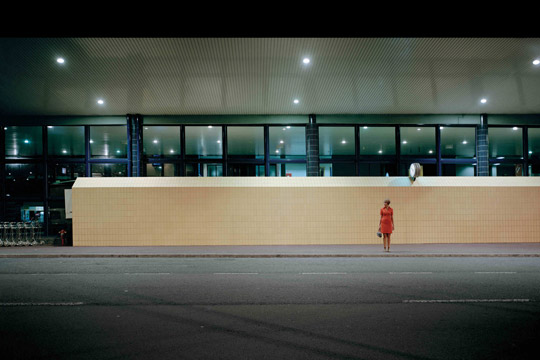Predstavljanje knjige Watching, Waiting. The Photographic Representation of Empty Places

12/04/2024
Institut za povijest umjetnosti i Oris Kuća arhitekture pozivaju Vas na predstavljanje knjige Watching, Waiting. The Photographic Representation of Empty Places (Leuven University Press, 2023.), koje će se održati u petak, 19. travnja 2024., s početkom u 18:00 sati u prostorijama Oris Kuće arhitekture (Ulica Kralja Držislava 3, Zagreb).
Znanstveni zbornik Watching, Waiting. The Photographic Representation of Empty Places urednica Sandre Križić Roban i Ane Šverko objavila je izdavačka kuća Leuven University Press u listopadu 2023. kao tiskano izdanje te u otvorenom pristupu.
Urednice su koncipirale knjigu na temelju odabranih izlaganja s konferencije Watching, Waiting – Empty Spaces and the Representation of Isolation, održane u sklopu programa Otkrivanje Dalmacije VI 2020. godine, u jeku pandemije COVID-19.
Knjiga je jedan od rezultata rada na HRZZ projektu Ekspozicija. Teme i aspekti hrvatske fotografije od 19. stoljeća do danas, a u njezinom financiranju su uz Hrvatsku zakladu za znanost sudjelovali i Leuven Fund for Fair Open Access i Zaklada Adris.
Predstavljanje će pozdravnim riječima otvoriti ravnateljica Instituta za povijest umjetnosti Katarina Horvat-Levaj, a knjigu će predstaviti arhitektica Marija Barović i antropologinja Lana Peternel te urednice Sandra Križić Roban i Ana Šverko.
Knjiga će se na predstavljanju moći naručiti po promotivnoj cijeni.
Iz recenzija:
Today, we are slowly forgetting the state of consciousness at the beginning of the COVID-19 pandemic, and the time of isolation and empty spaces is behind us. However, reading this book does not have the effect of recalling that state; rather, it serves to recognize the concept of emptiness as a scientific research topic, confirming a series of studies of exceptional authenticity and excellence that, overlapping and complementing each other, form an interdisciplinary mosaic of knowledge. A group of researchers and artists, inspired by isolation, loneliness, detachment, remoteness, and absence, found inspiration in photography — be it artistic, vernacular, conceptual, documentary, architectural, archaeological, ethnological, landscape, street — whether historical or contemporary. They use it as a means to interpret visual, historical, and social phenomena. By becoming aware and critically examining numerous negative social phenomena and their consequences, such as racism, colonialism, imposed and authoritarian historical narratives, and the extreme inequalities produced by the power structures of neoliberal capitalism, the authors in this book advocate for equality, unity, equity, and social solidarity.
Ana Šeparović, Život umjetnosti 112, no. 1 (2023): 144-149. https://hrcak.srce.hr/315662
“Watching, Waiting: The Photographic Representation of Empty Places” is a timely, interdisciplinary contemplation on what photographs of empty spaces mean and evoke. It is highly recommended to researchers and artists interested in the history, politics, and aesthetics of representing empty spaces.
Theopisti Stylianou-Lambert, izvanredna profesorica, Ciparsko tehnološko sveučilište, Cipar / Voditeljica muzejskog laboratorija, CYENS Centar izvrsnosti
“Watching, Waiting: The Photographic Representation of Empty Places” offers a timely and engaging selection of essays that addresses the new role of photography during the last years of pandemic lockdown. Importantly, the volume brings forth reflections on how the photographic medium has worked to create lines of connection between people in isolation and crisis. But it also discusses the way photographs are used to encounter and meditate emptiness and desolate urban spaces – in a way that recalls the early works by Niépce and Daguerre. A highly valuable contribution to the ongoing expansion and enrichment of photography studies!
Sigrid Lien, Sveučilište u Bergenu, Norveška
The editors are to be congratulated for this collection, which was conceived at the height of the Covid-19 pandemic. We are reminded of a range of ways in which photography has been used to document separation and seclusion in times of turmoil.
Liz Wells, profesor emerita Kulture fotografije, Sveučilište u Plymouthu, Ujedinjeno Kraljevstvo